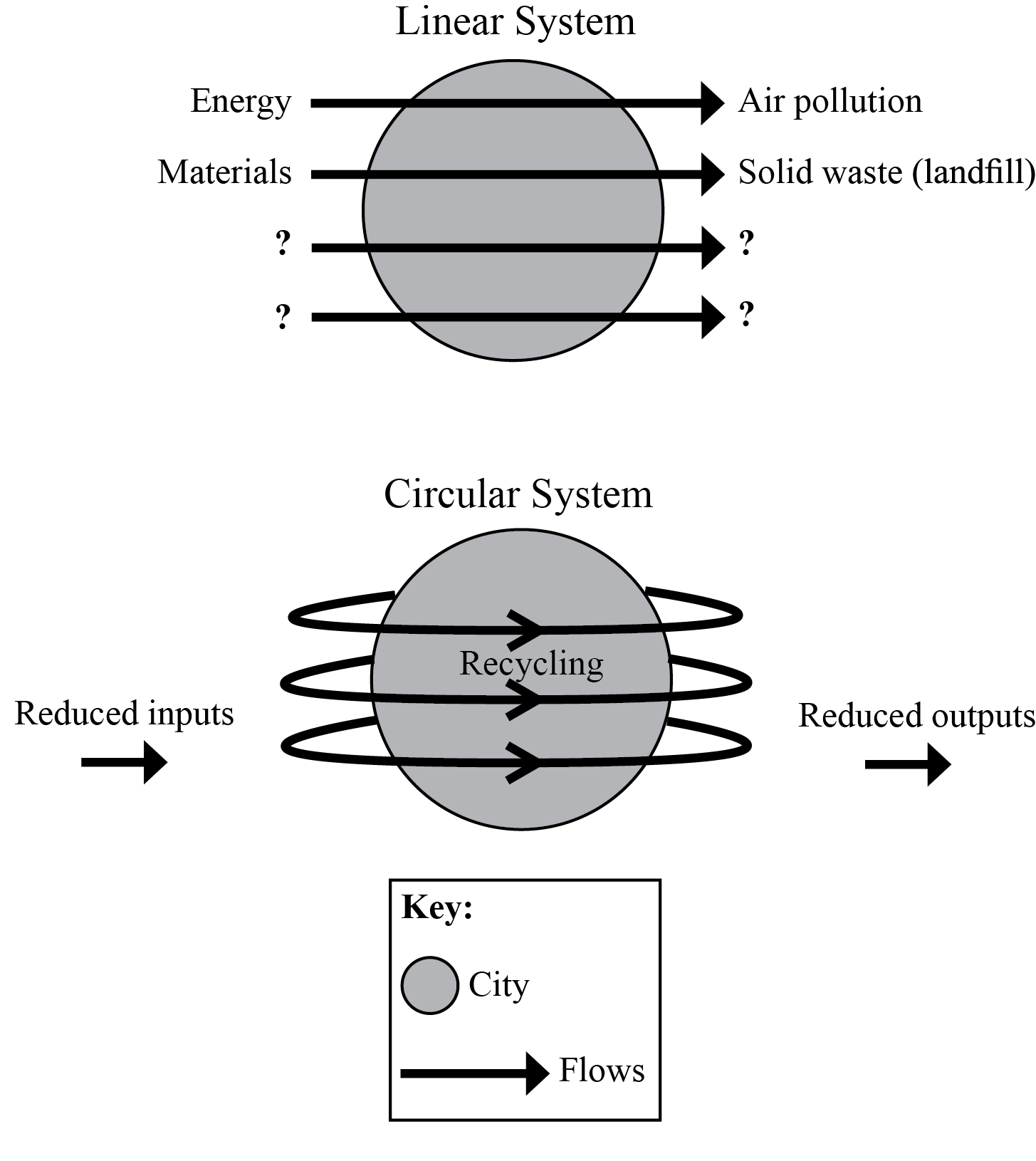| Date | November 2011 | Marks available | 10 | Reference code | 11N.2.bp.14 |
| Level | SL and HL | Paper | 2 | Time zone | |
| Command term | Examine | Question number | 14 | Adapted from | N/A |
Question
The diagram shows two contrasting city systems.

[Source: adapted from www.dep.org.uk/scities/rationale/whylearn.php]
Identify two possible additional inputs and two possible additional outputs for the linear system.
Explain why the circular system has a reduced urban ecological footprint.
Examine the dominant population movements and their consequences for one or more urban areas.
Markscheme
Inputs: water, land, timber, food. 1 mark for each. Do not credit “resources”.
Outputs: sewage/water waste, water pollution, industrial waste. 1 mark for each. Do not credit “waste”.
Accept other valid suggestions.
Credit understanding of “urban ecological footprint”, defined as the amount of land required [1 mark] to provide the resources the city needs [1 mark] and to dispose of waste produced by residents and businesses of the urban area [1 mark].
Specific ways of achieving this include:
- Circular system has reduced inputs and outputs, thus requiring less land to provide resources and to dispose of or mitigate waste products.
- Less energy is required to transport resources and waste materials.
- Increased recycling allows for reduction in both inputs and outputs.
There may be other valid responses.
Dominant population movements are likely to be either centrifugal or centripetal. These have a range of impacts on land use patterns and social, economic and environmental conditions in cities.
Centrifugal (moving out): suburbanization and counter-urbanization may cause increased urban sprawl and consumption of surrounding fertile land, increased journey times and therefore traffic congestion and associated pollution. The associated spiral of decline in central urban areas may be discussed – lack of investment in the physical environment including housing stock, loss of retail activity to meet customer location, in-migration of minority groups, increased unemployment and crime.
Centripetal (movement into the city and re-urbanization): caused by the “gravity” of the city. Consequences include rapidly increasing population and therefore demands for housing, services and resources including water. Housing needs met by unplanned settlement and overcrowding of existing housing stock. Pressure on services such as water, health, refuse disposal and education increases, leading to significant unmet demand. Despite these factors, migrants may experience increased opportunity and standard of living leading to permanence.
Responses could either focus on only one movement and its consequences or could contrast movements in different locations. Answers should refer to at least one specific example.
Responses that describe the dominant movement(s) and discuss a range of associated consequences are likely to reach bands E/F.
Marks should be allocated according to the markbands.
Examiners report
This was often poorly done at both levels and surprisingly few gained full marks.
Many answers did not make clear the relationship between a circular system and the ecological footprint due to weak understanding of the latter term.
Answers tended to be mediocre, with many weaker responses choosing to discuss only rural–urban migration and ignoring movements such as counter-urbanization, suburbanization and their impacts.

